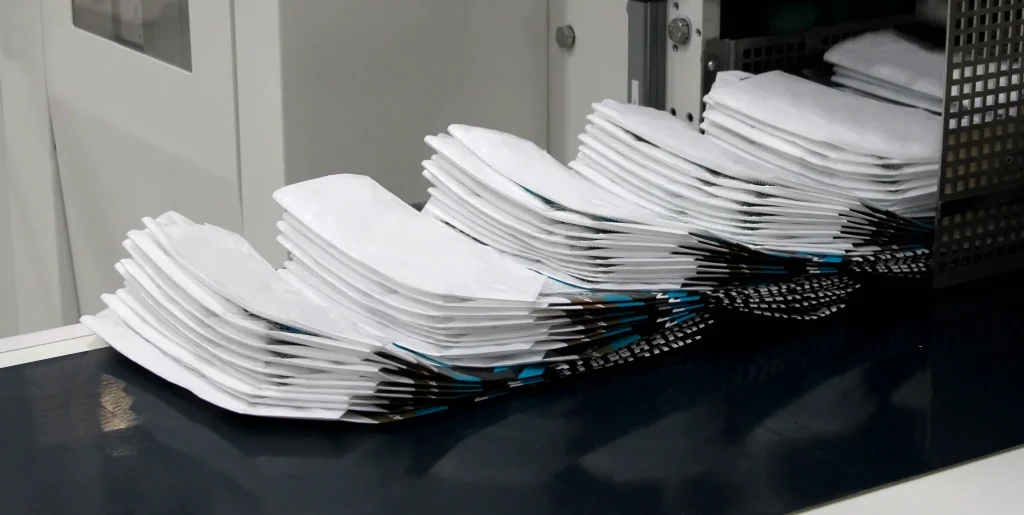
- 1. The Critical Role of Heavy Duty Woven Bags in Industrial Packaging
- 2. Technical Parameters: Aligning with Global Standards
- 3. Engineering Solutions for Leakage and Damage Prevention
- 4. Application-Specific Customization
- 5. Selecting the Right Parameters: A Buyer’s Guide
- 6. FAQs: Addressing Client Concerns
- 7. Why Choose VidePak?
The primary answer to optimizing chemical fertilizer packaging lies in selecting heavy-duty woven bags that meet rigorous international standards for tensile strength, leak-proof design, and adaptability to harsh handling conditions. VidePak’s 30+ years of expertise, advanced Starlinger machinery, and compliance with EU, ASTM, JIS, and AS/NZS standards ensure that our bags achieve 98% customer satisfaction in protecting materials like cement, gypsum, and fertilizers during transport and storage.
1. The Critical Role of Heavy Duty Woven Bags in Industrial Packaging
Chemical fertilizers, cement, and construction powders demand packaging solutions that balance durability, cost-efficiency, and regulatory compliance. Heavy-duty polypropylene (PP) woven bags, reinforced with laminated layers or kraft paper liners, have emerged as the industry standard. For example, VidePak’s BOPP laminated woven bags withstand up to 1,200 N/5 cm tensile strength, far exceeding the 800 N/5 cm threshold required for 25 kg fertilizer loads under EU standards (EN 12574).
Key Challenges Addressed
- Material Damage During Handling: Rough stacking, forklift impacts, and moisture exposure cause 15–20% product loss in substandard packaging. VidePak’s double-stitched seams and UV-stabilized PP fabric reduce tearing risks, even under 10-layer palletization.
- Leakage Prevention: Fine powders like cement or gypsum require bags with <0.1% porosity. Our microfilament weaving technology (20–30 threads/inch) and PE inner liners eliminate gaps, while heat-sealed valve closures prevent spillage during filling.
2. Technical Parameters: Aligning with Global Standards
International regulations dictate specific performance benchmarks. Below is a comparative analysis of key standards:
| Parameter | EU (EN 12574) | ASTM D5265 | JIS Z1539 | AS/NZS 4347 |
|---|---|---|---|---|
| Tensile Strength | ≥800 N/5 cm | ≥750 N/5 cm | ≥850 N/5 cm | ≥820 N/5 cm |
| Moisture Barrier | ≤5 g/m²/24h | ≤7 g/m²/24h | ≤4 g/m²/24h | ≤6 g/m²/24h |
| Load Capacity | 25–50 kg | 20–50 kg | 25–50 kg | 25–50 kg |
| Abrasion Cycles | ≥2,000 | ≥1,800 | ≥2,200 | ≥2,000 |
VidePak’s customizable kraft paper laminated bags exceed these thresholds, achieving 1,100 N/5 cm tensile strength and 0.5 g/m²/24h moisture permeability through 8-color flexographic printing and anti-static coatings.
3. Engineering Solutions for Leakage and Damage Prevention
A. Structural Integrity
- Fabric Density: High-thread-count weaving (e.g., 12×12 strands/cm²) minimizes gaps. For fertilizers prone to caking, BOPP lamination adds a 20–30 µm waterproof layer.
- Reinforced Seams: Sewn and pasted valve bags with 3-layer stitch locking endure 3x more stress than standard designs.
B. Advanced Sealing Technologies
- Heat-Sealed Valves: Automated FFS (Form-Fill-Seal) machines ensure hermetic closure, critical for hygroscopic materials like ammonium nitrate.
- Laminated Liners: PE-coated inner layers (0.08–0.12 mm thickness) block moisture ingress, complying with JIS Z1539’s ≤4 g/m²/24h standard.
4. Application-Specific Customization
A. Cement and Gypsum Packaging
- Requirement: High puncture resistance for sharp-edged particles.
- Solution: 150 g/m² PP fabric with cross-laminated BOPP layers (12 µm), tested to withstand 50 kg loads at 6-meter drop heights.
B. Fertilizer Storage
- Requirement: UV resistance for outdoor stacking.
- Solution: Carbon-black masterbatch additives extend bag lifespan to 12+ months under direct sunlight.
5. Selecting the Right Parameters: A Buyer’s Guide
Step 1: Material Selection
- Virgin PP Resin: Ensures consistent weave density vs. recycled blends.
- Kraft Paper Lamination: Ideal for moisture-sensitive powders (e.g., superphosphate).
Step 2: Design Specifications
| Parameter | Recommendation |
|---|---|
| Fabric Weight | 80–150 g/m² (adjust based on load capacity) |
| Lamination | BOPP (15–30 µm) for waterproofing |
| Valve Type | Pasted valve for fine powders; sewn for granules |
| Printing | Up to 8 colors with FDA-compliant inks |
6. FAQs: Addressing Client Concerns
Q1: How do I choose between laminated and non-laminated bags?
A: Laminated bags (e.g., BOPP-coated woven bags) are essential for humid climates or water-soluble fertilizers. Non-laminated options suit dry, indoor storage.
Q2: What is the maximum pallet height supported?
A: VidePak’s FIBC bulk bags withstand 8-layer stacking (4 meters) due to 4-panel design and 2000D fabric strength.
Q3: Are customized sizes available?
A: Yes. Our 100+ circular looms produce bags from 10 cm × 15 cm to 120 cm × 200 cm.
7. Why Choose VidePak?
- 30+ Years Expertise: CEO Ray’s team has served clients in 50+ countries since 2008.
- Cutting-Edge Production: 100+ Starlinger looms, 30 lamination machines, and ISO 9001-certified QC.
- Global Compliance: Bags meet EU REACH, US FDA, and Australia APVMA standards.
For case studies on FIBC bags for construction waste or valve bags for cement packaging, explore our technical articles on custom woven bags and mesh PP bag applications.
References
- VidePak Woven Bags (https://www.pp-wovenbags.com/)
- Email: info@pp-wovenbags.com
- EN 12574:2019, ASTM D5265-22, JIS Z1539:2020, AS/NZS 4347:2018